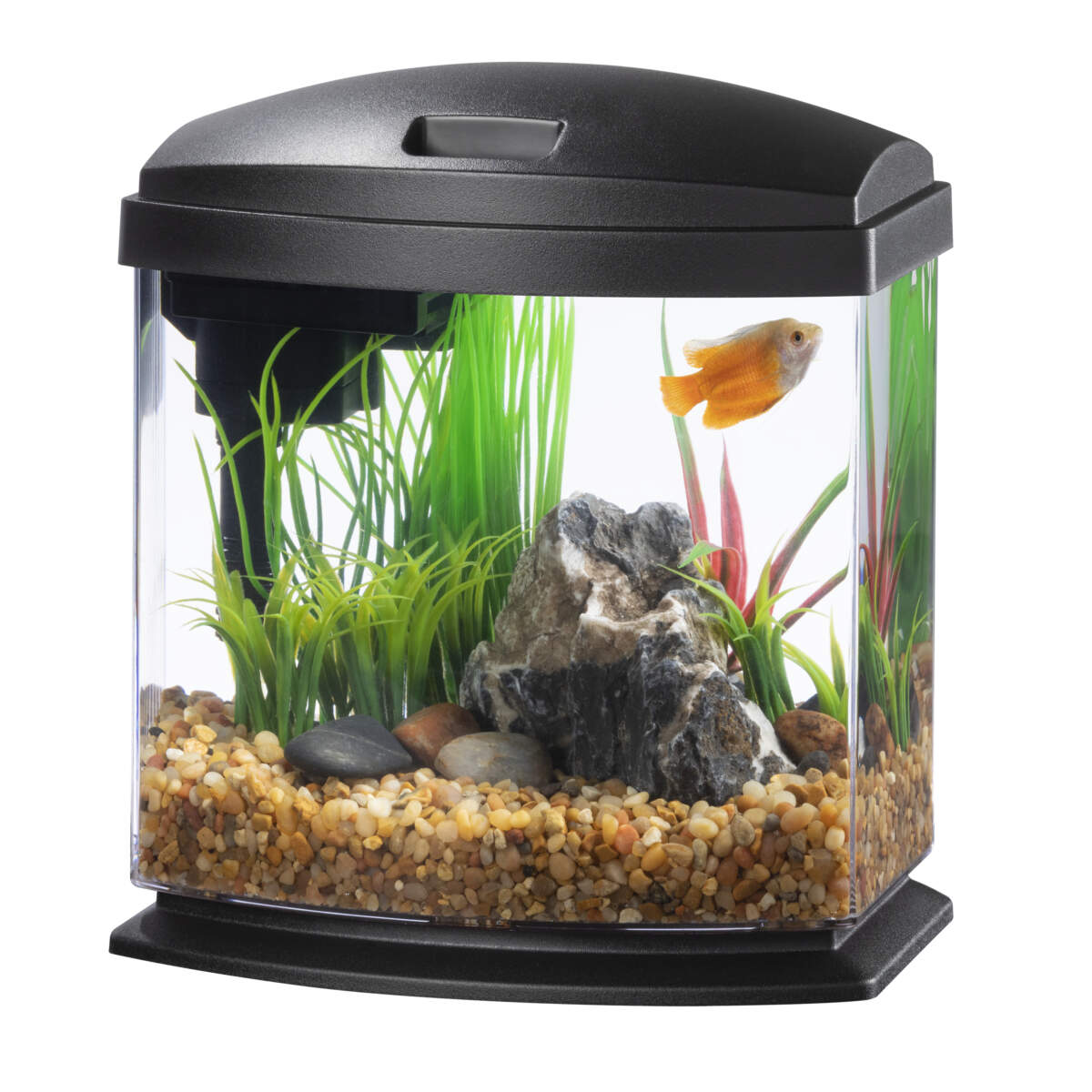Artificial Aquarium Plants: Aquascaping for Beginners
You did it! You've set up your new fish tank, let the water cycle, and are ready to start adding fish and decor. Don't forget the artificial aquarium plants! They not only add visual interest to the tank, but also provide hiding places for your aquatic friends.
How to Decorate an Aquarium with Artificial Plants
Think of this process like landscaping a yard or filling an outdoor planter. Choose a variety of plants of varying heights, colors, and textures to add depth to the aquarium environment.
Most artificial aquarium plants resemble ocean and freshwater specimens, making your aquascape look like a realistic recreation of an outdoor environment. And, there are some wild, neon-colored options out there that look like plants from a planet, far, far away. Those are fun for a child's bedroom aquarium or as a conversation piece in an aquarium in a restaurant lounge.

Before you go too crazy with all the options, remember not to buy fake plants that are taller than your aquarium height. Choose mostly sinking plants that have weighted bases to tuck into the aquarium substrate. You can add a few artificial floating plants if you have a large aquarium, fish that are top feeders, aquatic turtles, or are breeding fish and need places for the fry to hide from larger fish.
How to Clean Artificial Aquarium Plants
When it comes to keeping algae from growing on plastic aquarium plants, prevention is the best route. Doing regular water changes, changing filter cartridges, keeping the tank out of direct sunlight, and using a product such as Aqueon Algae Remover can keep green water at bay, and algae growth on your plants, substrate, and aquarium walls to a minimum.
If you already have an overgrowth of the green fuzzy stuff, it's time to remove the artificial plants from the tank and use a soft scrub brush or sponge under warm running water to remove the algae. Then, let the plants fully air dry before putting them back into the aquarium. Avoid washing artificial plants with harsh chemicals, dish soap or ammonia which can leave a residue that can transfer to the tank and make your fish ill. Strong oxidizers like bleach and hydrogen peroxide can be used to clean artificial plants if done properly. Soaking the plants in a solution of 1 part bleach to 10 parts water for max 4-6 hours can oxidize algae. Afterwards, soak the plants in water with a dechlorinator such as Aqueon Tap Water Conditioner or Aqueon Ammonia Remover to neutralize any remaining chlorine. Rinse thoroughly before putting back in the tank.

Artificial Plants vs. Live Aquarium Plants
If you're a plant hobbyist and want to grow real aquatic plants, go for it! But for those of us who have brown thumbs, it's best to stick with fake aquarium plants. Why? They stay fresh-looking for years, don't shed plant matter into the water (which may cause cloudiness), and won't get ragged edges from being nibbled on by your fish friends.
Are you ready to give your tank a makeover? Incorporating artificial aquarium plants is an excellent way to add rich color and new areas for your pets to explore. Happy aquascaping!
Please join our newsletter, connect with us on Facebook or contact us for more information.





